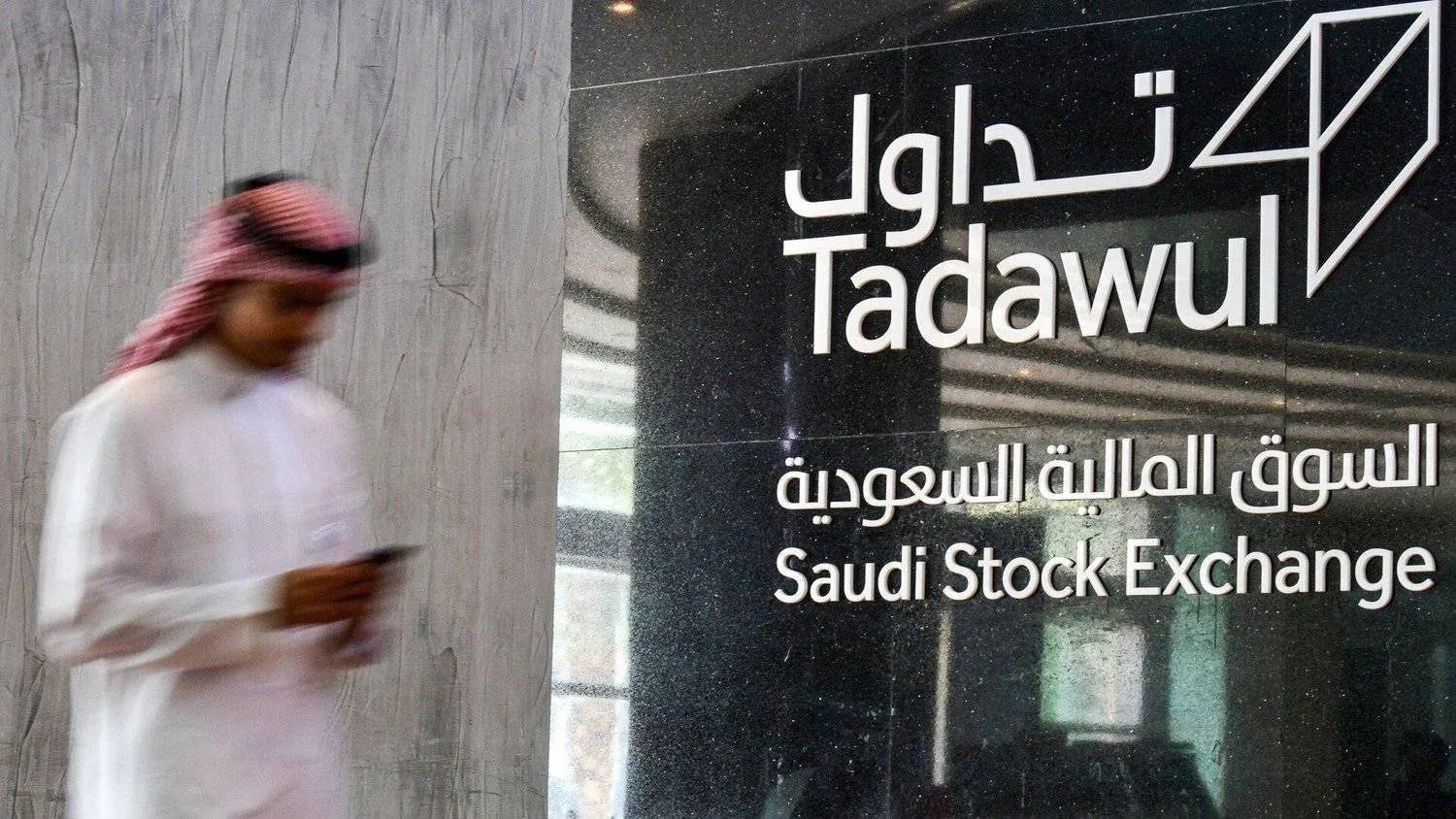
Saudi Banks Achieve Record Profits in 2024 Amid Credit and Market Growth
Top 10 listed banks in Saudi Arabia report SR79.64 billion in net profits, driven by increased lending and market participation.
RIYADH: Saudi Arabia’s top 10 listed banks reported record net profits of SR79.64 billion ($21.23 billion) in 2024, reflecting a 13.84 percent increase compared to the previous year, according to data released by the Saudi Exchange.
This significant performance is attributed to robust lending growth, a decline in interest rates, and enhanced participation in debt markets.
The Saudi National Bank (SNB AlAhli) emerged as the frontrunner, contributing 26.6 percent of the total banking profits with SR21.19 billion.
Following closely was Al Rajhi Bank, which accounted for 24.8 percent, totaling SR19.72 billion.
Together, these two banks comprised approximately 51.4 percent of the sector's overall profits.
Among those with notable annual growth, Arab National Bank recorded a 21.98 percent increase in net profits, reaching SR4.97 billion.
Bank AlJazira also showed strong performance with a 20.69 percent rise, culminating in SR1.23 billion, although it maintained the smallest sector profit share at 1.5 percent.
The total assets of the top 10 Saudi banks soared to SR4.21 trillion in 2024, representing a year-on-year increase of 13.6 percent.
SNB AlAhli held the largest asset base at SR1.1 trillion, while Al Rajhi Bank followed with SR974.39 billion.
These two banks accounted for nearly half of the sector's total assets.
Al Rajhi Bank demonstrated significant asset growth, expanding by 20.58 percent, trailed by Saudi Investment Bank, which increased by 20.53 percent to reach SR156.67 billion.
According to a report by S&P Global published in January 2025, the outlook for Saudi Arabia’s banking sector remains positive, with continued profitability anticipated in 2025. The report predicts a 10 percent increase in bank lending, primarily driven by corporate loans associated with Vision 2030 projects, as the Kingdom invests in large-scale economic initiatives.
Stable credit growth is expected to be supported by easing interest rates and a favorable economic environment, with return on assets projected to remain between 2.1 percent and 2.2 percent.
The report also noted that banks are likely to increasingly seek financing through international capital markets to support investments related to Vision 2030, ensuring a stable liquidity flow.
Additionally, mortgage lending is expected to rise due to lower borrowing costs and demographic trends fueling demand for residential properties.
In the stock market, Saudi banks dominated trading activity on Tadawul in the fourth quarter of 2024, holding a 17 percent market share, surpassing both the materials and energy sectors.
Overall, Saudi banks experienced a 14.41 percent year-on-year growth in total loans and advances to customers, reaching SR2.81 trillion, with deposits rising by 7.87 percent to SR2.68 trillion during the same period.
Al Rajhi Bank led in loan issuance, providing SR693.4 billion—a 16.8 percent increase from the previous year.
It was followed by SNB AlAhli with SR654.25 billion and Riyadh Bank with SR274.4 billion.
The Saudi Arabian Monetary Authority (SAMA) reported that 11.28 percent of total bank loans, which included 21 percent of corporate loans, were directed towards real estate, crucial for the Kingdom’s infrastructure development.
Saudi Investment Bank exhibited the highest loan growth rate at 23.18 percent, achieving SR99.47 billion, while Saudi First Bank saw a 20.10 percent increase to SR259.35 billion.
Total bank deposits across the top 10 banks reached SR2.68 trillion in 2024, with Al Rajhi Bank holding the largest share at SR628.24 billion.
SNB AlAhli followed with SR579.76 billion.
Riyadh Bank demonstrated the strongest deposit growth at 20.21 percent, totaling SR306.42 billion, and Bank AlJazira increased its deposits by 15 percent to SR108.19 billion.
As lending growth outpaced that of deposits, Saudi banks increasingly accessed debt capital markets to fund their credit expansion.
Fitch Ratings noted a significant rise in international debt issuance by Saudi banks since 2020, aligning with long-term growth strategies and foreign currency funding needs.
The Gulf Cooperation Council (GCC) banking sector is projected to issue over $30 billion in US dollar-denominated debt in 2025, following a record $42 billion in 2024. This surge is attributed to maturing debt and robust regional credit demand, particularly in Saudi Arabia and the UAE.
In 2024, GCC banks accounted for 18 percent of all emerging market bank debt issuance in US dollars, rising to 36 percent when excluding Chinese banks.
Favorable global investor confidence, bolstered by stable oil prices projected around $70 per barrel in 2025, has further enhanced regional debt markets.
Short-term certificates of deposit also became a prominent funding instrument in GCC banks, comprising 21 percent of total debt issuance in 2024.
This significant performance is attributed to robust lending growth, a decline in interest rates, and enhanced participation in debt markets.
The Saudi National Bank (SNB AlAhli) emerged as the frontrunner, contributing 26.6 percent of the total banking profits with SR21.19 billion.
Following closely was Al Rajhi Bank, which accounted for 24.8 percent, totaling SR19.72 billion.
Together, these two banks comprised approximately 51.4 percent of the sector's overall profits.
Among those with notable annual growth, Arab National Bank recorded a 21.98 percent increase in net profits, reaching SR4.97 billion.
Bank AlJazira also showed strong performance with a 20.69 percent rise, culminating in SR1.23 billion, although it maintained the smallest sector profit share at 1.5 percent.
The total assets of the top 10 Saudi banks soared to SR4.21 trillion in 2024, representing a year-on-year increase of 13.6 percent.
SNB AlAhli held the largest asset base at SR1.1 trillion, while Al Rajhi Bank followed with SR974.39 billion.
These two banks accounted for nearly half of the sector's total assets.
Al Rajhi Bank demonstrated significant asset growth, expanding by 20.58 percent, trailed by Saudi Investment Bank, which increased by 20.53 percent to reach SR156.67 billion.
According to a report by S&P Global published in January 2025, the outlook for Saudi Arabia’s banking sector remains positive, with continued profitability anticipated in 2025. The report predicts a 10 percent increase in bank lending, primarily driven by corporate loans associated with Vision 2030 projects, as the Kingdom invests in large-scale economic initiatives.
Stable credit growth is expected to be supported by easing interest rates and a favorable economic environment, with return on assets projected to remain between 2.1 percent and 2.2 percent.
The report also noted that banks are likely to increasingly seek financing through international capital markets to support investments related to Vision 2030, ensuring a stable liquidity flow.
Additionally, mortgage lending is expected to rise due to lower borrowing costs and demographic trends fueling demand for residential properties.
In the stock market, Saudi banks dominated trading activity on Tadawul in the fourth quarter of 2024, holding a 17 percent market share, surpassing both the materials and energy sectors.
Overall, Saudi banks experienced a 14.41 percent year-on-year growth in total loans and advances to customers, reaching SR2.81 trillion, with deposits rising by 7.87 percent to SR2.68 trillion during the same period.
Al Rajhi Bank led in loan issuance, providing SR693.4 billion—a 16.8 percent increase from the previous year.
It was followed by SNB AlAhli with SR654.25 billion and Riyadh Bank with SR274.4 billion.
The Saudi Arabian Monetary Authority (SAMA) reported that 11.28 percent of total bank loans, which included 21 percent of corporate loans, were directed towards real estate, crucial for the Kingdom’s infrastructure development.
Saudi Investment Bank exhibited the highest loan growth rate at 23.18 percent, achieving SR99.47 billion, while Saudi First Bank saw a 20.10 percent increase to SR259.35 billion.
Total bank deposits across the top 10 banks reached SR2.68 trillion in 2024, with Al Rajhi Bank holding the largest share at SR628.24 billion.
SNB AlAhli followed with SR579.76 billion.
Riyadh Bank demonstrated the strongest deposit growth at 20.21 percent, totaling SR306.42 billion, and Bank AlJazira increased its deposits by 15 percent to SR108.19 billion.
As lending growth outpaced that of deposits, Saudi banks increasingly accessed debt capital markets to fund their credit expansion.
Fitch Ratings noted a significant rise in international debt issuance by Saudi banks since 2020, aligning with long-term growth strategies and foreign currency funding needs.
The Gulf Cooperation Council (GCC) banking sector is projected to issue over $30 billion in US dollar-denominated debt in 2025, following a record $42 billion in 2024. This surge is attributed to maturing debt and robust regional credit demand, particularly in Saudi Arabia and the UAE.
In 2024, GCC banks accounted for 18 percent of all emerging market bank debt issuance in US dollars, rising to 36 percent when excluding Chinese banks.
Favorable global investor confidence, bolstered by stable oil prices projected around $70 per barrel in 2025, has further enhanced regional debt markets.
Short-term certificates of deposit also became a prominent funding instrument in GCC banks, comprising 21 percent of total debt issuance in 2024.











